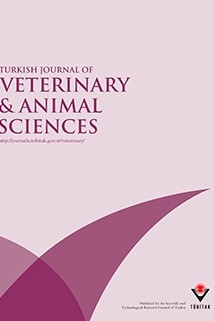
Turkish Journal of Veterinary and Animal Sciences
Yazarlar: Rahşan İVGİN
Konular:-
Anahtar Kelimeler:RAPD-PCR,Polymorphism,Genetic similarity,Genetic distance
Özet: The purpose of this study was to evaluate genetic similarities and distances among pure lines of poultry using the RAPD technique. In this study four layer and three meat type pure lines were used. Venous blood samples from five males and five females of each line were collected from the venae cutenea ulnaris. The RAPD technique was used to generate a DNA fingerprint of lines. Initially, a total of 35 primers having arbitrary sequences were used for RAPD analysis. The amplicons were resolved on 1.5% agarose gel and stained with ethidium bromide. To evaluate the bands, polymorphic and monomorphic bands were described. Genetic similarities and genetic distances were calculated in meat and layer pure lines. The RAPD analysis data from 23 primers were utilized in estimating genetic similarities, which ranged from 0.644 to 0.853 between the lines. The maximum genetic distance was observed between the L2 meat dam line and L4 layer sire line (0.440).